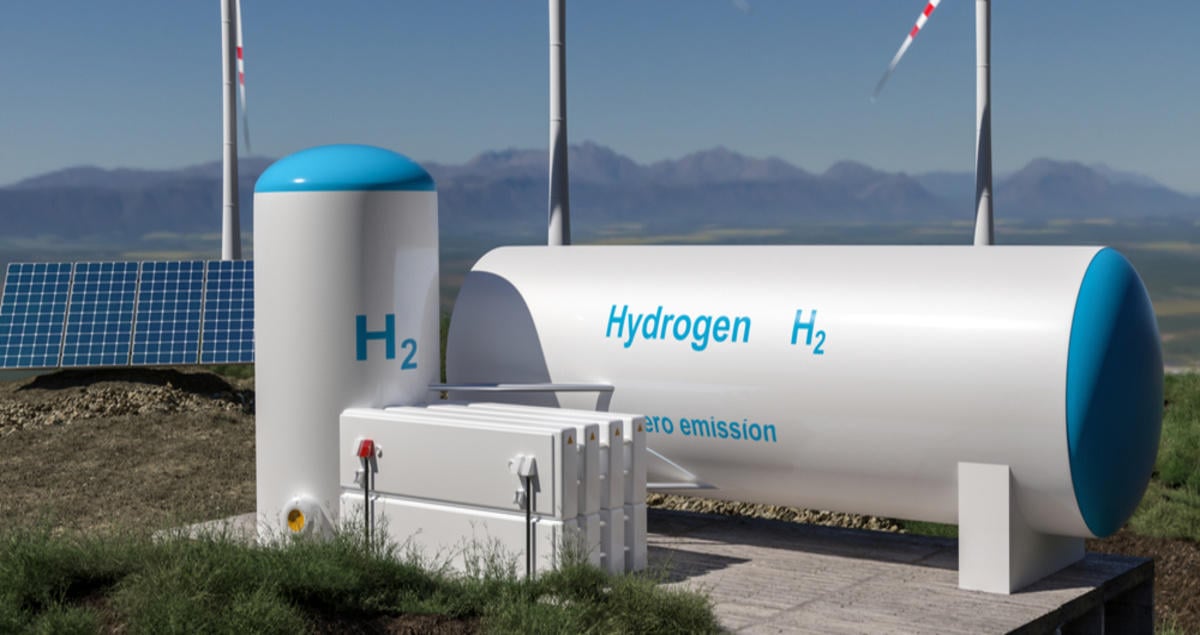By Ewan Thomson

We have been putting hydrogen to use since at least the 17th century, decades before anyone really knew what it was — before Henry Cavendish first recognized it as a distinct element and named it in 1766.
There are numerous ways to utilize hydrogen to enrich our lives: we use it for heat, for light, for fertilizing crops and even for space travel, to name just a few applications.
And new uses and functions of hydrogen are still emerging. Here are six reasons why hydrogen is likely to be a vital renewable energy source of the future.

1. No direct CO2 emissions
No carbon dioxide (CO2) is produced when using hydrogen. When it reacts with oxygen, hydrogen generates only electricity, water and heat. And since it does not contain any carbon, no CO2 is created.
This means that by switching from fossil fuels to hydrogen in engines, gas turbines, boilers and fuel cells, the creation of power and heat can be done without direct CO2 emissions. Plant owners can switch to hydrogen technologies like the hydrogen gas turbine from Mitsubishi Power, a power solutions brand of Mitsubishi Heavy Industries (MHI), by converting to hydrogen co-firing, and soon 100% hydrogen firing.
2. High energy density
Hydrogen combusts quickly and at high temperature. When it is combined with oxygen and ignites, it forms water and releases heat.
As our knowledge of how to safely handle the flammability of hydrogen has developed, this has unlocked hydrogen’s potential as a resource for our long-term energy needs, as cleaner fuels can now be made with hydrogen that are highly efficient.

3. Plentiful and versatile
Hydrogen is the most abundant element in the universe and is all around us, mainly in the form of water (H2O) and fossil fuels, otherwise known as hydrocarbons. But it is rare to find pure hydrogen in nature as a gas — typical levels are less than one part per million by volume. To make pure hydrogen, therefore, it must be produced either from fossil fuels, biomass or water.
Most of the hydrogen in use today is produced using a thermal process. This utilizes high temperatures to produce steam, which is in turn mixed with hydrocarbons to produce hydrogen. But it is increasingly being made using solar-driven, electrolytic or even biological processes.

4. Storage potential
The amount of energy produced from renewable energy sources such as solar and wind power tends to fluctuate because of weather conditions. Combining energy storage solutions with renewables mitigates the intermittent nature of renewable energy production, and hydrogen is a proven provider of effective storage.
Converting renewable energy to hydrogen via electrolysis allows it to be stored and used at a later date, while also stabilizing the energy grid by providing a source of energy “on tap”. Better still, the hydrogen can be stored for long periods without significant losses.
5. An industrial fuel
Hydrogen can also be used as a fuel to power energy-intensive industrial processes, such as metal processing and glass manufacturing. Heavy industry has a challenging decarbonization journey ahead of it, accounting for nearly 40% of the world’s final energy use in 2021.
Hydrogen is likely to be an important tool for replacing fossil fuels in hard-to-abate industry, many processes of which are difficult to be electrified. Initiatives are already underway - steel manufacturer ArcelorMittal is developing industrial-scale production and use of Direct Reduced Iron (DRI) made with 100% hydrogen.
6. Strong investment
The surge of investment in hydrogen is testament to its potential. Electrolysis deployment reached record high levels in 2021, with over 200MW of additional capacity added, three times more than in 2020.
The International Energy Agency’s (IEA) Hydrogen Projects Database shows nearly 1,500 low-carbon projects. The “green” hydrogen market alone — valued at $676 million in 2022 — is projected to reach $7.3 billion by 2027. The Inflation Reduction Act (IRA) in the US offers significant subsidies for producing green hydrogen, which is expected to further accelerate market growth.
Companies are looking to develop hydrogen hubs, too. Construction of the world's first industrial-scale green hydrogen hub is underway in central Utah and will be operational in 2025. The Advanced Clean Energy Storage hub — a joint venture between Mitsubishi Power Americas and Magnum Development — will provide green hydrogen to support power producer Intermountain Power Agency's IPP Renewed Project. The hub could expand to hold enough green hydrogen to support decarbonization efforts across the entire western United States.
A fuel of tomorrow and today
The longevity and versatility of hydrogen is immense; it has been used to generate electricity since the 19th century, and will soon be utilized for space travel experiences, gently lifting tourist capsules into the stratosphere.
Hydrogen has already proved its use in many industries, but it has not yet realized its full potential to support decarbonization, according to the IEA, which describes hydrogen as “a key pillar of decarbonization for industry”.
But given its many practical uses, there is little doubt that hydrogen will continue to support new technologies and be a vital component in getting the world to net zero emissions.
Source : https://spectra.mhi.com/










0 nhận xét:
Đăng nhận xét